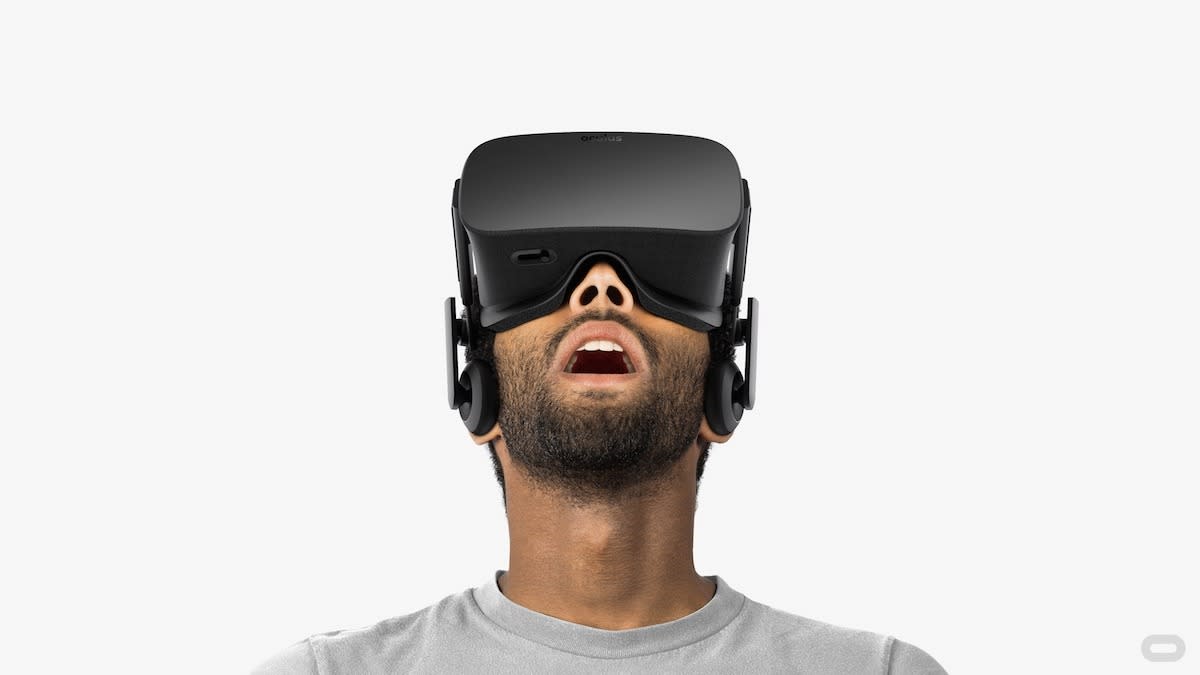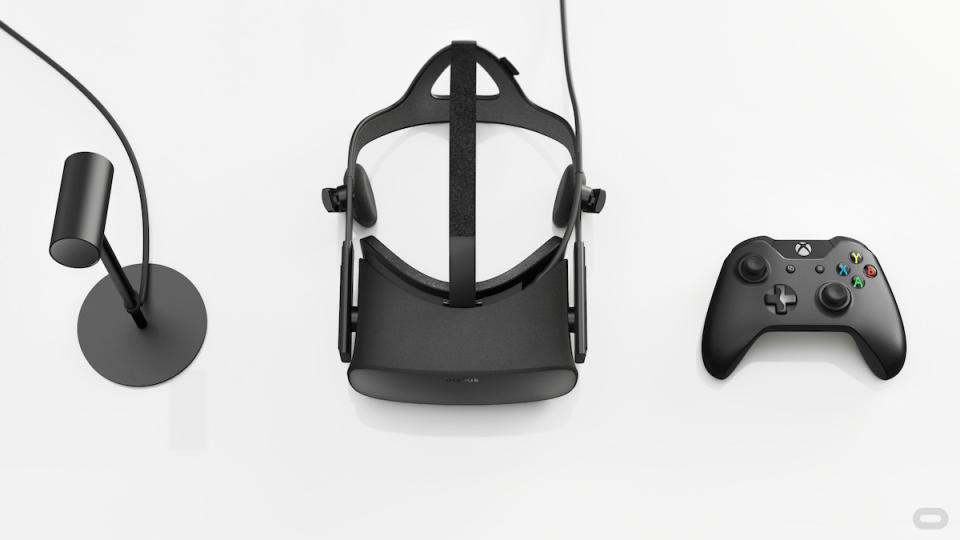The Reality of VR: The Oculus Rift Will Cost $599 and Will Ship in March

The biggest name in VR is a step closer to reality.
Oculus unveiled the final price for its hotly anticipated Rift headset along with a more precise window for its release: $599 in March 2016. The company began taking pre-orders on its website Wednesday morning, though most prospective buyers were met with a blank white page there, as the site got hammered by early adopters.
The steep asking price isn’t totally out of the blue — Oculus CEO Palmer Luckey has in the past gone on record noting that the headset would certainly cost more than $350 — but it’s bound to induce some sticker shock to the hordes of gamers and techies eager to step into VR. According to Mr. Luckey, pre-orders will only be charged when the product ships.
The $599 price includes the Rift headset and cables, an Oculus Remote, an Xbox One controller, and two free games: the awesome space-dogfighter Eve Valkyrie and the impressive platformer Lucky’s Tale. (The company expects there will be more than 100 compatible titles by the end of the year, including 20 exclusives from Oculus Studios.)

Equally notable is what that price doesn’t include. Those incredible Touch controllers that allow Rift wearers (Rifties? Rifters?) to grasp and manipulate virtual objects with their fingers have been bumped back to the second half of 2016.
Related: More coverage of CES 2016.
More problematically, you’ll need a PC capable of running Rift experiences. The recommended Rift specs are fairly steep: You’ll need a minimum NVIDIA GTX 970 or AMD 290 video card, which start around $300. You’ll also need a few USB 3.0 ports, HDMI out, and at least 8 GB RAM.
Serious PC gamers won’t have any issues meeting those bars, but average consumers — or just folks with older but perfectly capable PCs — will likely have to upgrade at least a component or two, if not their whole rigs. To smooth out that process for newbies, Oculus says it has partnered with PC manufacturers to offer Rift/PC bundles starting around $1,500.
Oculus is realistic about its prospects: It expects to sell around one million units in 2016 — a modest number in the context of traditional home consoles and gaming platforms.
The price does, however, open the door a bit for another VR maker to swoop in and undercut the Rift. HTC and Valve have made waves with their Vive headset, while Sony’s PlayStation VR cuts out the upgrade worry since it will work with every retail PS4.
A more immediate problem? Convincing the throngs of VR naysayers scoffing at the price that their headset is worth it. Where are those Best Buy demo stations, guys?
When Ben Silverman isn’t staring into a VR headset, he’s staring at Twitter at @ben_silverman.
More from CES 2016:
HTC and UnderArmor’s HealthBox is an All-in-One Fitness Tracking System
HTC Debuts Improved Vive Pre VR Headset with Front-facing Camera
Samsung Goes After Microsoft, Apple With Win 10 Tablet and Laptops
Toyota Spending $1 Billion to Develop AI-Driven Cars, Robots for the Home
Ford Says It Will Have Self-Driving Cars and Smart-Home Integration by 2020
4 Big Trends at CES 2016: Cars, Wearables, Laptops, and Accessories for Everything
LG’s See-Through, Rollable OLED Screens: Here, But Not Cheap
Meet CleverPet, the Electronic Game That’s Like ‘Simon’ For Dogs

